31 Jul Your Car Transmission: What Are The Signs It Needs Service?
![]() No one wants to deal with a car with transmission issues. They can be expensive, time-consuming, and inconvenient. For me, knowing why something is not working makes it easier to deal with. Hopefully, this blog will help you understand how your automatic transmission works and point out common issues like low fluid and the check engine light.
No one wants to deal with a car with transmission issues. They can be expensive, time-consuming, and inconvenient. For me, knowing why something is not working makes it easier to deal with. Hopefully, this blog will help you understand how your automatic transmission works and point out common issues like low fluid and the check engine light.
How Your Automatic Transmission Works
Your vehicle’s automatic transmission is a fairly complex system with lots of moving parts that rely heavily on transmission fluid to operate. On many modern cars, the transmission is a completely closed system that cannot be opened or serviced without a trained technician and a computerized diagnostic machine. Older vehicles may have a transmission fluid dipstick to check fluid levels. There are a couple of different types of automatic transmissions, but they all work in similar ways. And while not all auto manufacturers use the exact same components, this basic overview should help you comprehend how your automatic transmission system works.
Transmission Fluid
Transmission fluid lubricates, helps prevent corrosion, and cools transmission components. It also provides the hydraulic pressure necessary to change gears.
Hydraulic Pump
The pump delivers pressurized transmission fluid from the pan to the valve body first, then to the rest of the components in the transmission system.
Transmission Fluid Pan
A transmission fluid pan holds the excess fluid for the pump to circulate through the system. It typically has an internal or external filter for the fluid. There is also a gasket that seals the transmission housing and the fluid pan.
Valve Body & TCM
The transmission’s valve body is a control center (filled with sensors and valves) that acts like an ECU (engine control unit). During gear shifts, the transmission control module (TCM) sends signals to the solenoids in the valve body, directing them to open or close. The valve body directs all the pressurized fluid from the pump through specific passages to all the automatic transmission components so your vehicle can change gears smoothly.
Torque Converter
You cannot shift gears while the transmission is engaged to the engine. In automatic transmissions, the torque converter replaces the clutch used in a manual transmission. It lets your engine idle while the transmission shifts up or down without stripping or damaging the gears. The torque converter is a fluid coupling, connecting the engine to the transmission via transmission fluid pressure.
Planetary Gear Set
Many automatic transmissions utilize planetary gear sets. Planetary gears include three parts:
- The sun gear is the main one in the center of the planetary carrier.
- The planetary gears are the next group surrounding the sun gear. There can be three or more planet gears of different sizes.
- A ring gear surrounds all the planetary gears with one ring, connecting the entire system.
The system achieves the desired gear ratio by locking two of the three gear sets at a time. It’s an incredibly efficient system because each gear set is a different size, creating a multitude of gear ratios.
Clutch Packs
Clutch packs have multiple friction discs compressed together by the transmission fluid. The valve body directs pressurized fluid to the clutch packs, locking them together. Specific amounts of ‘fluid pressure’ engage a fixed number of discs, determining the gear ratio.
Brake Band
Brake bands temporarily hold planetary gears so the engine RPMs line up with the gear ratio before releasing, allowing smoother shifting. Brake bands work similarly to drum brakes, with a piston squeezing the band around a drum. The harder the piston pushes, the more braking power is applied.
Output Shaft
The transmission’s output shaft is what powers your vehicle’s drive shaft. One end of the output shaft has a gear connecting to the transmission, and the other has a yoke-type universal joint connecting to the driveshaft.
Common Transmission Issues
Troubleshooting issues can be tricky with all the moving parts in your automatic transmission. If you are experiencing any of these common issues, immediately bring your vehicle to a qualified auto service center. Fixing it at the first sign of a problem is far less expensive than replacing damaged components due to a lack of maintenance.
Low or Leaking Transmission Fluid
When a vehicle is operating correctly, transmission fluid should never burn off or need to be topped off. If you have low fluid, look for a puddle of red liquid on the ground, towards the middle or front of the car. If your vehicle comes with a transmission warning light, low fluid will trigger it. If your vehicle is an older model, the check engine light may turn on instead.
Faulty Hydraulic Pump
Since the hydraulic transmission pump moves the transmission fluid to engage or disengage gears, there are obvious signs when it is faulty.
- Noise: A failing pump often makes a whirring or whining noise that may increase when accelerating.
- Gear Slippage: A pump that does not produce enough hydraulic pressure to change gears can cause the gears to slip out of position.
- Check Engine Light or Transmission Light: The onboard computer will engage warning lights if it detects an issue with the pump.
- Cannot Change Gears: A disabled pump will prevent the transmission from moving in any gear.
- Low or Leaking Fluid: Old, cracked, or damaged seals around the various transmission components can leak fluid and prevent the pressure required to operate the pump.
High-Revving Engine or Delayed Shifting
Delayed shifting can cause your engine to rev at a high level. It may be caused by:
- Low fluid
- Burned or old transmission fluid due to lack of maintenance
- Compromised fluid due to water contamination
- Excessive wear and tear on transmission components
Noisy Shifting: Buzzing, Clunking, Grinding
Noisy shifting can result from low fluid, gear damage, or faulty sensors, valves, or solenoids.
Warning Indicator Light
If the Check Engine Light or Transmission Light turns on, bring your vehicle into your auto service center for a diagnostic service. It’s not wise to drive when one or both (if your car is so equipped) of these warning lights are on, especially if you are experiencing any of the above transmission issues. Remember, ignoring the factory safeguards built into your car is playing with fire.
Transmission Service in Ann Arbor, MI
Ron’s Garage has served Ann Arbor and the surrounding areas of Saline, Dexter, and Pittsfield Township since 1982. Keeping your car’s automatic transmission in great shape is essential to a well-functioning vehicle. If you notice noisy shifting, suspect low fluid, or have your check engine light on, let our team help. Our highly trained technicians can perform a diagnostic transmission service to find the cause and return your peace of mind.
Schedule Transmission Service
Call us today to schedule an automatic transmission appointment with our friendly service agents at (734) 961-4701 or visit our website.

